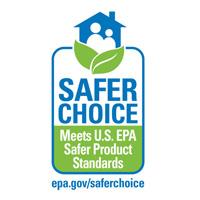Cleaning Effectively for a Healthy School Environment
On this page:
- Why It's Important
- What You Can Do
- EPA and Federal Partners
- National Organizations
- Regional, State and Local Resources
Why It's Important
- The chemicals found in some cleaning products can cause health problems, including headaches and eye, nose and throat irritation.
- If products contain volatile organic compounds (VOCs), adverse health effects can include asthma, upper respiratory irritation, fatigue, nasal congestion, nausea and dizziness.
- Green cleaning products and practices may avoid these health effects and also:
- Protect the health of students, teachers and custodial staff who use the chemicals frequently
- Prevent student and faculty absences
- Increase cost savings by using fewer products
- Increase the lifespan of facilities
What You Can Do
- Schedule routine cleaning when the building is unoccupied.
- Maintain a current product inventory and keep copies of safety data sheets.
- Read and follow cleaning product labels, and ensure the products are inaccessible to students.
 Look for products that meet the Safer Choice standard. Use products that have:
Look for products that meet the Safer Choice standard. Use products that have:
- Neutral pH levels and no known carcinogens
- Low or no fragrance
- Low or no volatile organic compounds
- Energy and water savings benefits
- Biodegradability and less packaging
- Use proper equipment to clean, including high-efficiency vacuums and filters.
- Conduct thorough cleaning of kitchens, cafeterias and other food use areas.
- Store garbage properly and dispose of it each day.
EPA and Federal Partners
- EPA's Model K-12 School Environmental Health Program provides guidance for schools and school districts that are beginning to develop, or are strengthening, a school environmental health program, including the key steps for implementing a program and practical actions that schools can take to address a wide range of environmental issues associated with building design, construction and maintenance.
- Green Cleaning Pollution Prevention Calculator Exitfrom EPA quantifies the projected environmental benefits of purchasing and using "green" janitorial services and products. It is designed to forecast the environmental benefits of reducing chemical use by doing some or all pollution prevention measures typically involved in the routine interior cleaning of an office building. This tool also enables users to identify which green cleaning measures will have the greatest impact in reducing their use of hazardous chemicals and in preventing pollution.
- Protecting Students and Staff with Green Cleaning explains basic green cleaning concepts and offers tips on how to build a green cleaning program.
- EPA's Environmentally Preferable Purchasing (EPP) website describes the importance of purchasing environmentally preferable products and offers tools for choosing and buying greener products. The website includes:
The following links exit the site Exit
National Organizations
- Cleaning for Healthy Schools Toolkit is an online tool to help schools’ facilities staff find and phase in the use of certified green cleaning products that are proven to work and to save money. The toolkit is sponsored by the Collaborative on Green Cleaning in Schools.
- Green Clean Schools from the Healthy Schools Campaign is a multimedia how-to guide to help schools adopt cleaning programs that encourage the use of green products, equipment and practices in schools.
- Fact Sheet Series - Cleaning, Sanitizing and Targeted Disinfecting, by the National Education Association Health Information Network, explains the importance of implementing a comprehensive cleaning program in specific school settings. The fact sheets address the difference between cleaning, sanitizing and disinfecting and discuss procedures for preventing and controlling an infectious disease outbreak.
- School Wide - Tips for Custodial and Maintenance Staff
- Classroom - Tips for Teachers and Paraprofessionals
- Cafeteria and Kitchen - Tips for Food Service Workers
- Athletics Department - Tips for Athletic Directors, Physical Educators and Coaches
- School Bus - Tips for Bus Drivers
- APPA Custodial Operation Self-Analysis Program (PDF)(15pp, 600K, About PDF)is a self-analysis tool designed to identify many of the variables that influence institutional custodial operations. It also establishes standardized benchmarks for the industry.
- School Cleaning and Maintenance Practices: Resource List by the National Clearinghouse for Educational Facilities offers an annotated list of links, books and journal articles on custodial standards and procedures, equipment, safety and product directories for the cleaning and maintenance of schools and colleges.
Regional, State and Local Resources
- The Green Cleaners for Hawaii Public Schools Fact Sheet (PDF) (2pp, 247K) is a guide to using "green" cleaning products in public schools.
- The Product Review Database maintained by the Los Angeles (California) Unified School District offers a searchable database of over 6,000 products evaluated by the district's Office of Environmental Health and Safety to determine their suitability for use in and around Los Angeles schools.
- New York's Green Cleaning Program operated by the New York State Office of General Services presents best practices and a list of approved green cleaning products. A toolkit also describes five steps to a green cleaning program as well as online training courses and customizable documents and templates.
- Green Cleaning, Sanitizing and Disinfecting: A Toolkit for Early Care and Education, supported by the California Department of Pesticide Regulation, helps programs use less hazardous cleaning products and practices while also reducing infectious disease.
